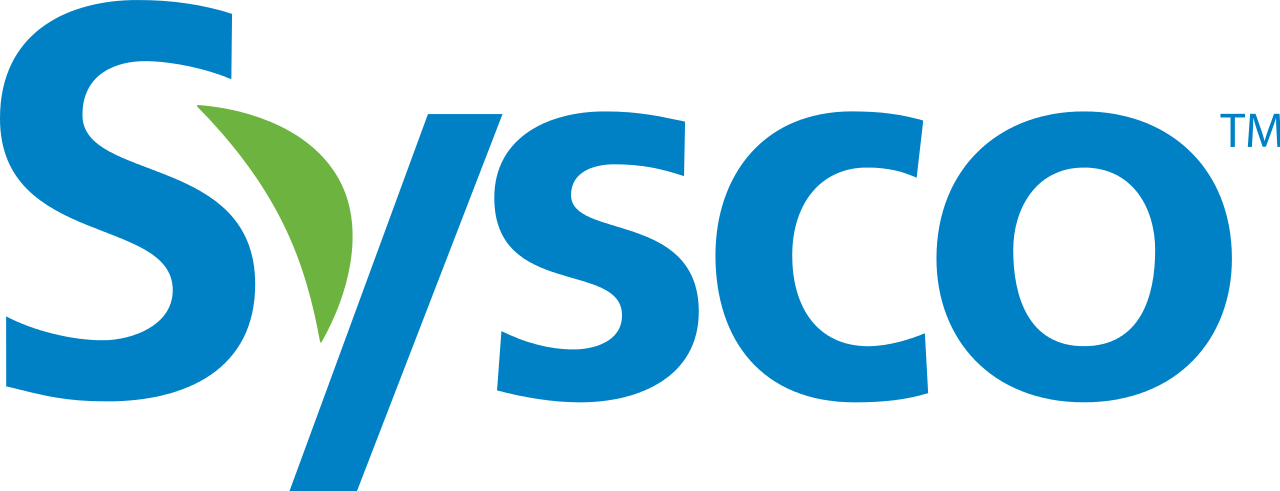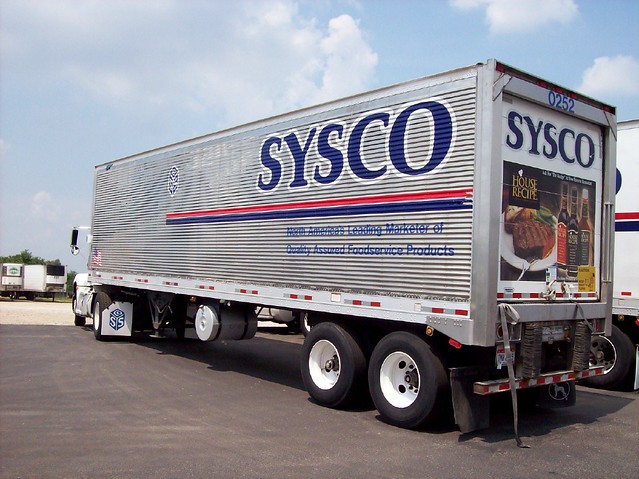About Sysco
First of all, this article isn’t in reference to the R&B artist popular in the late ’90s.
This is about one of the world’s largest food and kitchen equipment distribution companies headquartered in Houston, Texas.
Remember how in previous articles I mentioned that there are many vehicles (including large trucks) that commute up and down my university’s campus?
Along with FedEx, Sysco is one of the common culprits.

I’ve recently started a summer job at my university as a student assistant in one of the cafeterias and it’s not very hard to find myself surrounded by boxes and equipment with the “Sysco” label on it. Additionally, I’ve seen Sysco trucks parked in front of other facilities and buildings transporting and dropping off boxes of packaged foods and kitchen materials.
Sysco apparently does a lot of business with my university.
I find inspiration in weird places for stock analysis articles, however it’s not all that surprising that I’ve seen a lot of Sysco on campus given that they currently maintain around 16% of the food service market, which is a significant bite (pun intended) of the industry.
Much of this market share can likely be attributed to the company’s strategic acquisitions over the past few decades. Specifically, some of the company’s more notable buyouts started in the early ’80s and include purchases of companies such as CFS Continental, Olewine’s, Lipsey Fish Company, Hall One Chinese Imports, Fulton Prime Foods and a few others.
So, we’ve established that Sysco is huge and has its hands (and foods) in many different markets, as the company serves universities, chain restaurants, small businesses, militaries and prisons among other institutions.
Let’s now dig into the numbers that ultimately drive Sysco (and its past success) and see if the company has more to offer prospective shareholders.
Sysco’s stock financials
Sysco currently has a market capitalization of $42.24 billion, a price-to-earnings (P/E) ratio of 42.35 and pays shareholders an annual dividend of $1.96.
The company has built a solid reputation for consistently increasing its dividend over the years since becoming publicly traded which is a great sign that this business has been well-managed from the beginning and continues to be a tight financial ship. However, the company’s current P/E ratio indicates that the stock is considerably overvalued, as a P/E of 20 is generally considered to mean a stock is trading at fair value and anything above implies it’s overvalued.
Sysco’s stock being overvalued makes sense given its impressive run up as the company and economy overall rebounded from the initial impact of the COVID-19 pandemic, since rising over 140% since it’s pandemic low of around $35, now trading at around $86.

Peering over to Sysco’s balance sheet, the company oversees approximately $21.4 billion in total assets and almost $19.9 billion in total liabilities.
Our team expected the company’s total liabilities to be relatively high in comparison to its total assets given that the food distribution and restaurant and dining space as a whole is filled with waste, lots of equipment (including Sysco’s delivery trucks and vans), commodity price fluctuations and low margins.
However, we are pleased to know that even after the immense damage COVID-19 has done to the company and industry, Sysco’s total assets still outweigh its total liabilities and we think the company will be able to keep it this way barring any other further extraordinary events.
Over to the company’s income statement, the company’s total revenue has been pretty consistent over the past five years which makes sense given that Sysco likely has long-term contracts between itself and the universities and prisons (among other entities) it partners with. Specifically, the company’s total revenue since 2017 has typically been more or less $50 billion each year.
That is an aspect of the business we love.
Investing in a company with a steady and reliable stream of revenue in an uncertain and volatile business landscape is nothing short of a necessity for investors seeking financial shelter (and food and kitchen supplies if you want to help Sysco generate more revenue).
As is common with companies with long-term contracts with its customers, Sysco appears to be quite adept at generating cash flow, as the company’s cash flow over the past five years has been steady and positive, standing at around $1 billion between 2017 and 2019, dropping down a bit the following two years likely due to increased costs.
Sysco’s stock fundamentals
Given that the industry as a whole is not known for producing the highest margins, it’s understandable that Sysco’s trailing twelve month (TTM) net profit margin is slightly lower than the industry average. Specifically, Sysco’s net profit margin is 1.52% to the industry’s 2.28%.
Did we mention the margins are low in the food service and distribution industries?

If Sysco’s TTM net profit margin was catastrophically lower than the industry average, we’d be gravely concerned, however being slightly lower than the industry average (which is already low) isn’t a huge concern for us. It’s just a price paid for investing in the industry.
However, we do hope that as time goes on the company inches closer and closer towards the industry average and ultimately exceeds it as it continues to gain market share.
Unsurprisingly, the company’s TTM return metrics (returns on equity, assets and investment) are either somewhat lower or higher than the industry average, but not exceedingly far one way or the other. Again, an ultracompetitive and low margin industry such as food distribution is likely to keep returns and profits relatively low and unexciting.
Should you buy Sysco stock?
Sysco is one of the largest food distribution companies in the United States.
The company will likely be around until the end of time, scattering its trucks across the country filled with food, kitchen items and other materials essential to smooth operation.
However, the company’s stock price is overvalued.
Although the company appears to be fundamentally sound, we’d rather wait for a greater overall dip in the market and potentially establish a position in the company as its share price decreases.
Given the company’s current share price and its financials we give Sysco a “hold” rating.
DISCLAIMER: This analysis of the aforementioned stock security is in no way to be construed, understood, or seen as formal, professional, or any other form of investment advice. We are simply expressing our opinions regarding a publicly traded entity.